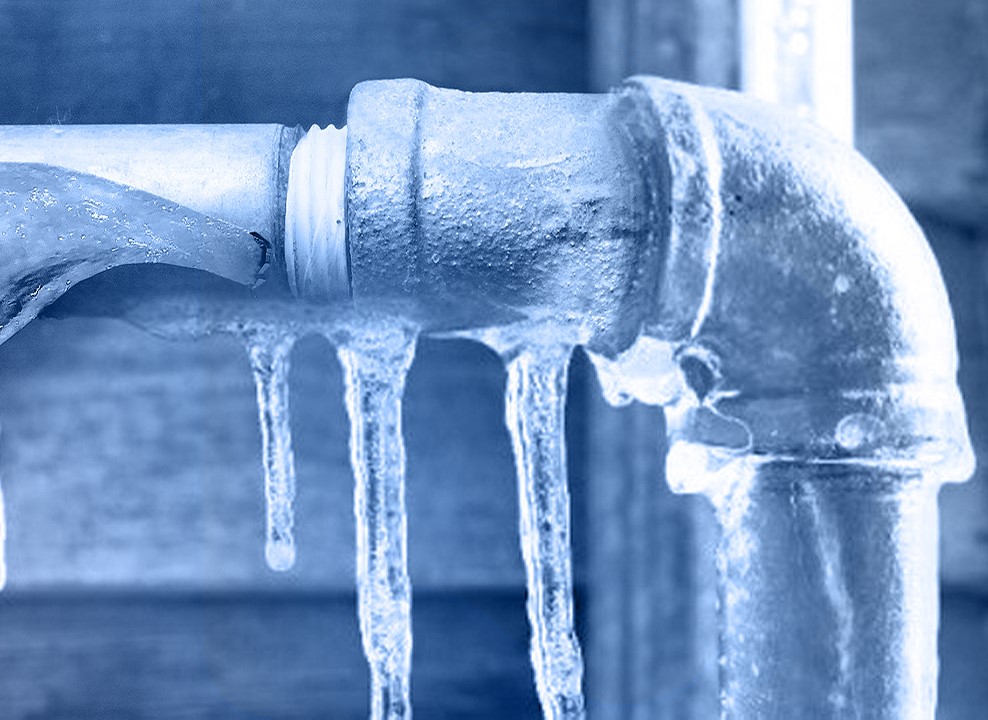Shielding Your Pipes from Cold Weather Issues: Critical Approaches
Shielding Your Pipes from Cold Weather Issues: Critical Approaches
Blog Article
Do you find yourself trying to locate information and facts involving How To Avoid Freezing Pipes?

Cold weather can ruin your plumbing, specifically by freezing pipes. Below's exactly how to prevent it from taking place and what to do if it does.
Introduction
As temperature levels decrease, the threat of frozen pipelines boosts, potentially leading to pricey repairs and water damages. Understanding exactly how to stop frozen pipes is vital for homeowners in cool climates.
Prevention Tips
Shielding vulnerable pipes
Cover pipelines in insulation sleeves or use warm tape to shield them from freezing temperatures. Focus on pipes in unheated or outside locations of the home.
Home heating strategies
Maintain interior spaces sufficiently warmed, specifically locations with pipes. Open cabinet doors to enable warm air to circulate around pipes under sinks.
How to identify frozen pipelines
Seek lowered water circulation from taps, unusual odors or sounds from pipelines, and visible frost on exposed pipelines.
Long-Term Solutions
Architectural modifications
Consider rerouting pipelines far from exterior wall surfaces or unheated areas. Include additional insulation to attics, cellars, and crawl spaces.
Upgrading insulation
Buy top notch insulation for pipes, attic rooms, and walls. Correct insulation assists maintain constant temperatures and reduces the danger of frozen pipes.
Shielding Outside Pipes
Garden pipes and outdoor faucets
Separate and drain garden tubes prior to winter. Set up frost-proof faucets or cover exterior faucets with protected caps.
Recognizing Frozen Pipes
What triggers pipelines to ice up?
Pipelines ice up when exposed to temperatures below 32 ° F (0 ° C) for prolonged periods. As water inside the pipes ices up, it broadens, taxing the pipeline walls and potentially triggering them to rupture.
Threats and problems
Icy pipelines can bring about supply of water interruptions, building damages, and costly repair services. Burst pipes can flood homes and cause extensive architectural damages.
Indications of Frozen Pipeline
Identifying icy pipelines early can avoid them from bursting.
What to Do If Your Pipelines Freeze
Immediate activities to take
If you think icy pipes, keep taps open to soothe pressure as the ice thaws. Utilize a hairdryer or towels taken in hot water to thaw pipelines slowly.
Verdict
Avoiding frozen pipes needs proactive procedures and fast reactions. By recognizing the causes, indicators, and preventive measures, house owners can protect their plumbing throughout cold weather.
6 Proven Ways to Prevent Frozen Pipes and Protect Your Home
Disconnect and Drain Garden Hoses
Before winter arrives, start by disconnecting your garden hoses and draining any remaining water. Close the shut-off valves that supply outdoor hose bibs and leave the outdoor faucet open to allow any residual water to drain. For extra protection, consider using faucet covers throughout the colder months. It’s also important to drain water from any sprinkler supply lines following the manufacturer’s directions.
Insulate Exposed Pipes
Insulating your pipes is an effective way to prevent freezing. Pipe insulation is readily available at home improvement stores and is relatively inexpensive. Pay close attention to pipes in unheated areas such as the attic, basement, crawl spaces, or garage. Apply foam insulation generously to create a buffer against the cold. You can also wrap your pipes in heat tape or thermostat-controlled heat cables for added warmth.
Seal Air Leaks
Inspect your home for any cracks or openings that could let in cold air. Seal any holes around the piping in interior or exterior walls, as well as the sill plates where your home rests on its foundation. Additionally, make sure to keep your garage door closed unless you’re entering or exiting. Leaving it open creates a significant air leak that can lead to frozen pipes.
Allow Warm Air Circulation
During cold snaps, it’s essential to allow warm air to circulate evenly throughout your home. Leave interior doors ajar to promote better airflow. Open kitchen and bathroom cabinets to help distribute heat consistently around the rooms. If you have small children or pets, be sure to remove any household chemicals or potentially harmful cleaners from open cabinets for safety.
Let Faucets Drip
A small trickle of water can make a big difference in preventing ice formation inside your pipes. When temperatures drop significantly, start a drip of water from all faucets served by exposed pipes. This continuous flow helps prevent the water from freezing. Additionally, running a few faucets slightly can relieve pressure inside the pipes, reducing the chances of a rupture if the water inside does freeze.
https://choateshvac.com/6-proven-ways-to-prevent-frozen-pipes-and-protect-your-home/

Do you really like reading about Prevent Frozen Pipes ? Leave a remark down the page. We'd be glad to find out your views about this entry. We hope to see you back again before long. Sharing is nice. Helping others is fun. We value reading our article about How to Prevent Your Pipes From Freezing.
Schedule A Free Estimate Report this page